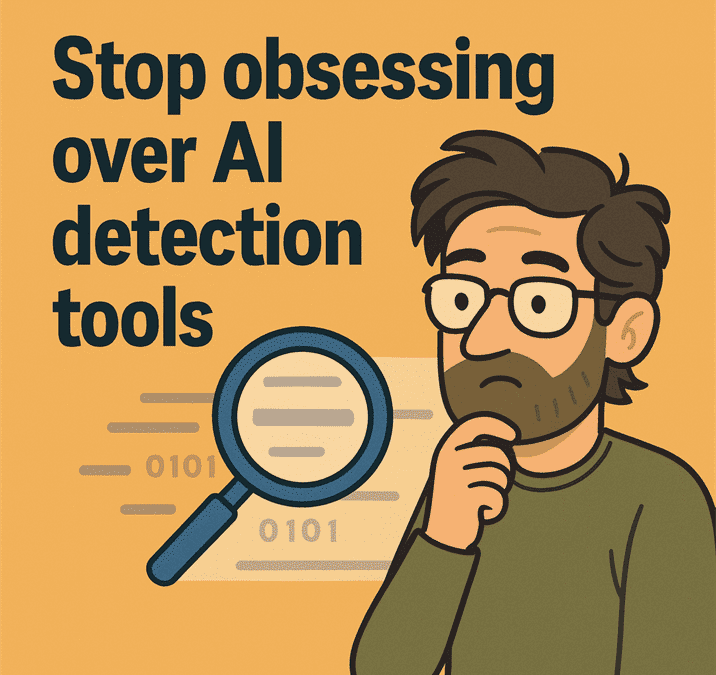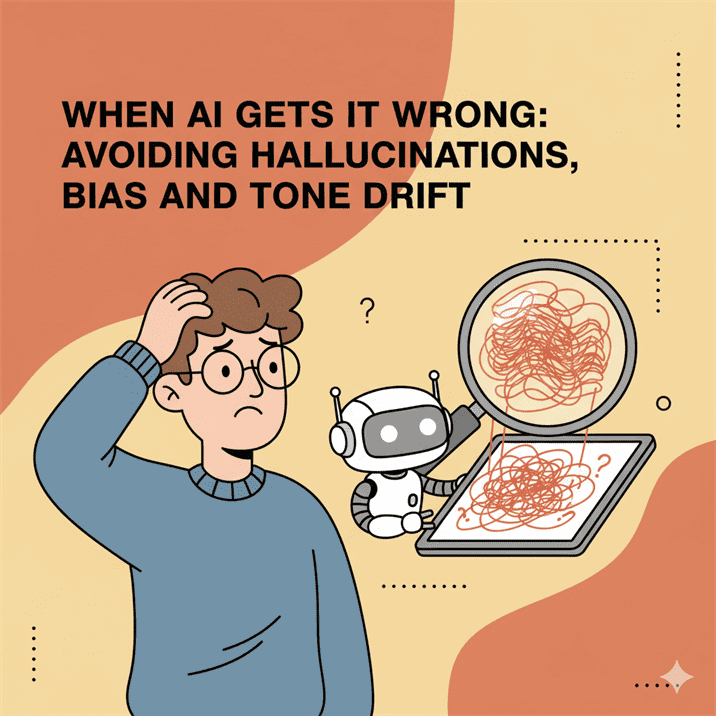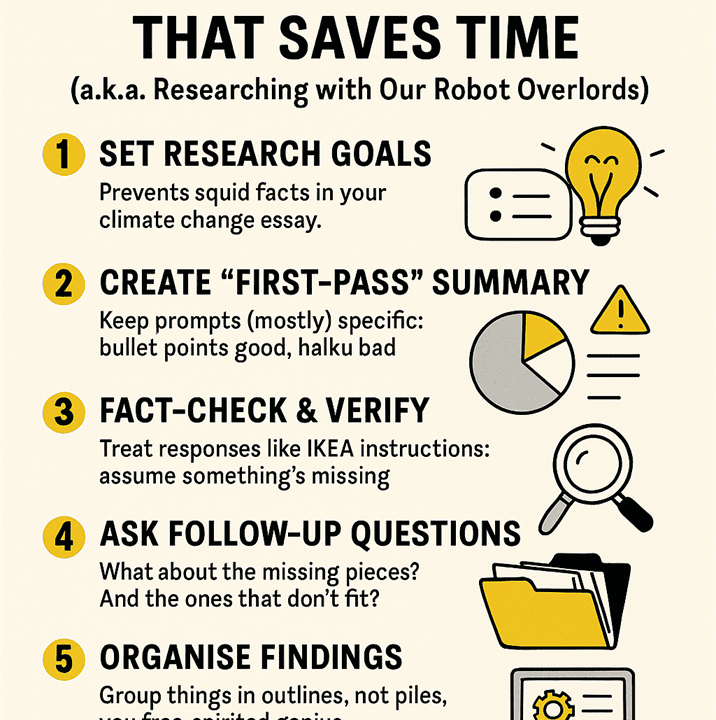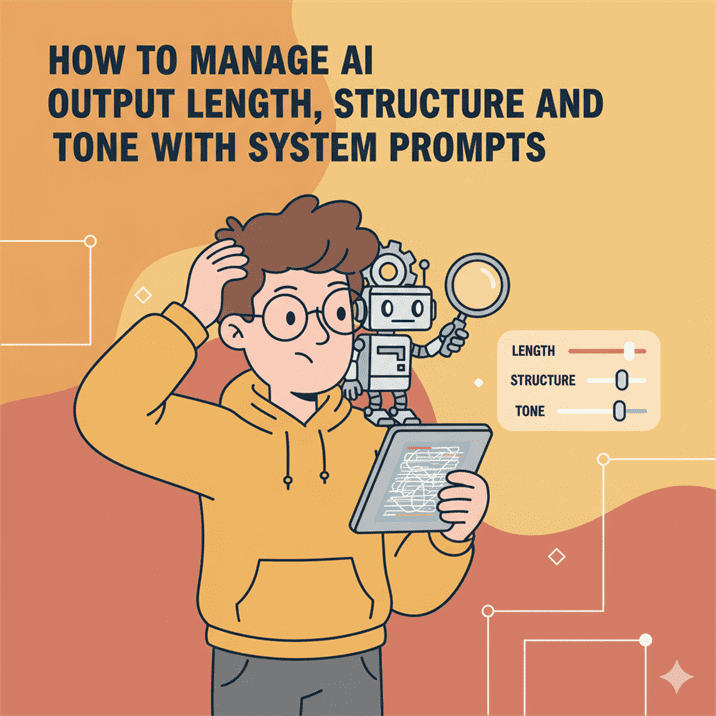Stop obsessing over AI detection tools

Alright, gather round, fellow digital creators. It’s time to talk about something that’s been bothering me more than a cat with a stuck claw: AI detection tools.
You’ve all seen them.
They claim to tell you whether something was written by a robot or a human. It’s like a magical black box where you drop a sentence, and it spits out a verdict like a grumpy judge.
“Guilty of AI manipulation!” it shouts, waving its gavel (which is probably made of pixels).
But here’s the thing. Why are we letting these tools decide the fate of our work?
Is a machine really the best judge of whether your content connects with real, live humans?
Spoiler alert: It’s not.
Sure, AI detectors have their uses, like spotting the occasional “clearly not written by an actual sentient being” sentence.
But the reality is, relying on these tools is like obsessing over whether your spaceship is made of the finest titanium alloy when you should really be worried about how fast it gets you to Alpha Centauri.
You know, the stuff that actually matters.
The AI detection obsession and why it’s a little overblown
Let’s break it down. AI detection tools will tell you if a chunk of text looks like it’s been generated by an algorithm.
But here’s the twist, looks don’t matter.
What matters is the impact of your content on the audience.
If it connects, engages, and leaves people thinking about it long after they’ve scrolled past, then who cares if a bot helped write part of it?
If you’ve ever read something that gave you that “wow, this feels like a real person talking to me” feeling, you know exactly what I mean.
But if you’ve read a perfectly “human-sounding” piece that left you as uninspired as a soggy toast, then you’ve probably encountered the flip side of the AI detector obsession, authenticity and quality.
That’s what we’re aiming for here.
Don’t let the mechanical whirs of detection tools distract you from the magic that happens when people feel heard, understood, and entertained.
What actually matters when editing AI content?
So, if the focus shouldn’t be on whether a machine generated the text, what should we care about?
Glad you asked.
Here’s my handy-dandy checklist for editing AI content.
Because, let’s face it, sometimes even our best robot friends need a little human touch:
1. Audience impact
Does this speak to the reader?
Seriously, if I’m reading this and I’m not feeling anything beyond the bare minimum of “yeah, that’s fine,” then we’ve got a problem.
Does it make them think? Laugh? Cry? (Hopefully not in a bad way, though, unless it’s a drama post, in which case, cry away.)
2. Originality
Does this have a unique voice, or does it sound like every other post that’s been churned out by a bot factory on a Monday morning?
Originality is the secret sauce. You don’t want to sound like a cheap knockoff of every other blog on the planet. Inject some personality. Give me something fresh.
When in doubt, be weird (but in a good way).
3. Clarity and coherence
Are the ideas flowing or are we zigzagging like a caffeinated squirrel on a sugar rush?
Sure, AI can string together words, but making sense of those words is where the magic happens.
No one wants to read a paragraph that sounds like it was written by a robot who’s never heard of punctuation. Keep it tight. Keep it clear.
4. Accuracy (Yes, really)
Is this factually correct, or are we just throwing darts at a target and hoping one sticks?
If you’re going to write about quantum physics, don’t pull facts out of thin air like some kind of wizard. Check your sources. Your audience will thank you.
Unless you’re writing fiction. In that case, make it wild!
5. Tone and style
Does this piece sound like it’s speaking to someone, or is it as bland as day-old porridge?
AI can get the grammar right, but it can’t always nail tone. You have to be the maestro guiding this symphony.
Is it funny? Sarcastic? Inspirational? Whatever it is, it should feel like a conversation, not a lecture from a robot who just learned how to use a thesaurus.
6. Engagement potential
Can we get a conversation going here?
This is the real secret to any piece of content. Whether it’s an intriguing question, a controversial take, or just a really weird anecdote, your content should make the audience want to talk back.
Does it spark discussion, comments, or shares? If it does, then my friend, you’ve hit gold.
In the end, AI is just a tool (Not a ruler)
Here’s the thing: AI is like that friend who’s always up for a late night brainstorming session.
Sometimes they’ll pitch a weird idea that ends up being brilliant.
Other times, you’ll have to toss their suggestions out the window because they’re just a little… off.
It’s not about how the content was created. It’s about what it does when it lands in front of an actual reader. Does it connect? Does it deliver?
So, next time someone pulls out an AI detection tool and starts waving it around like a Jedi with a lightsaber, just remember that it’s not the tools that matter.
It’s the message, the impact, and the heart behind it.
And I think we can all agree that no algorithm can feel your heartbeat as you write.
Now, go out there and write something that matters. And if the AI helped? Great. But don’t let it steal the spotlight.
P.S. As a final thought: If AI content makes the readers feel something, we’ve won. If it makes the AI detectors happy? Well, we’ve got bigger problems to solve!



